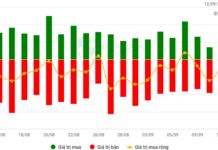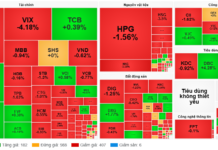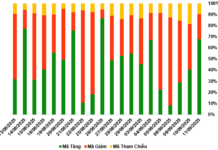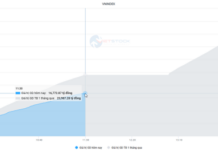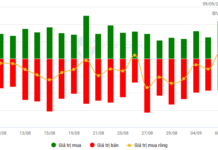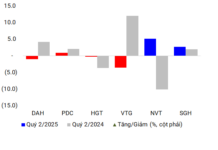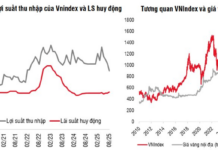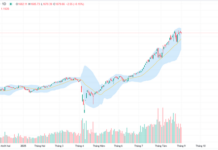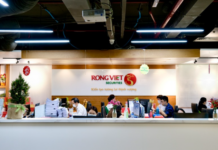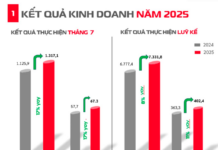The industrial sector is the largest and most important real economy sector, with significant impacts on other real economy sectors such as agriculture, forestry, fisheries, and construction, as well as the services sector. For developing and transitioning economies like Vietnam, the real economy is even more crucial. China’s experience demonstrates that a strong focus on the real economy, even becoming the “world’s factory,” can shield a country from negative external shocks and rapidly propel it to become the world’s second-largest economy.
A key indicator of an industrialized nation is the dominance of manufacturing and processing industries. While some countries have a large overall industrial scale, they may rely heavily on crude oil and mineral extraction, falling short of being considered technologically advanced due to a low proportion of manufacturing and processing activities.
An increase in the proportion of manufacturing and processing industries is a positive sign, but if supporting industries are weak, and assembly and processing activities dominate, it cannot be said that the country’s industry is modernizing. If a significant proportion of businesses have low technology and engineering capabilities, it further undermines the claim of industrialization.
Over a decade ago, Vietnam set a goal to become an industrialized country with modern tendencies by 2020, but it fell short and pushed the target to 2025. The question now is whether Vietnam can achieve this goal or if it will miss the deadline again without synchronized and decisive solutions in the coming years.
2023: LOW INDUSTRIAL GROWTH
The growth rate of added value in the industry over the years is as follows (Figure 1).
The growth rate of added value in the industrial sector from 2021 and prior years was typically higher than the overall growth rate, even during the COVID-19 pandemic. However, in 2022, it grew at a slower pace and began to decelerate in the fourth quarter of that year, continuing into 2023. Although the last few months of 2023 showed signs of improvement, the overall growth for the year fell short of the overall growth rate and was lower than the two pandemic years, a rare occurrence in recent years.
By sector, the mining industry experienced a significant decline, mainly due to a decrease in its production index (3.9%), particularly in crude oil and natural gas extraction, which fell by 5.7%. The manufacturing and processing industry, which has the largest share and is the primary indicator of industrialization, grew slowly. The electricity generation and distribution sector, as well as the water sector, grew at rates higher than the overall growth rate but had a much lower share compared to the manufacturing and processing industry. The electricity sector’s inability to meet demand had a negative “double impact” on the entire economy (Figure 2).
The proportion of manufacturing and processing industries in the overall economy remains low (Figure 3). While this proportion increased from 2022 onwards, it decreased in 2023 and failed to meet the annual target (25.4-25.8%). The main reason for this is that the growth rate of added value in the manufacturing and processing industry was lower than the overall growth rate (3.62% compared to 5.05%).
Many key industrial products experienced low or negative growth compared to the previous year (Figure 4). This includes products with a significant share, some of which saw declines or deep reductions.
Several factors contributed to the low industrial growth.
While the number of startup businesses in the manufacturing and processing industry increased, a significant number of businesses also temporarily ceased operations (10,728 businesses, up 22.2%). Many exported industrial products decreased or grew slowly (Figure 5). The primary reason for this was the low global demand and reduced orders. Numerous imported goods also experienced declines, some of which were substantial, impacting domestic production and exports in the following cycle.
The consumption growth rate of manufactured goods was very low, while inventory levels increased significantly (Figure 6). Slow consumption and high inventory directly affect production and industrial growth.
Capital factors significantly influence production, growth, and industrial growth. Credit growth was only two-thirds of the annual target and far lower than the previous year, mainly due to difficulties in capital demand and access for businesses and individuals.
Labor factors also played a role in industrial growth. Compared to the same period last year, the number of employees in industrial enterprises continued to decline (by 2.2%), including a 3.1% decrease in state-owned enterprises, a 2.2% decrease in non-state-owned enterprises, a 2% decrease in FDI enterprises, and a 2.3% decrease in manufacturing and processing enterprises.
The primary reasons for this continue to be the limitations and weaknesses of the industry in three areas: weak supporting industries, a high proportion of assembly and processing activities, and a low share of manufacturing and processing industries with advanced technology and engineering capabilities.
The issue of weak supporting industries has been discussed for a long time, but improvements have been slow, prolonged, and prevalent across many industrial sectors.
The high proportion of assembly and processing activities is not limited to the domestic industrial sector but also applies to the FDI sector. This is evident in the relatively high ratio of import and export turnover in the FDI sector, indicating low spillover effects on the domestic economy. This situation also leads to low effective revenue and high imports.
An important consideration is the balance of internal and external forces in the industry, which has yet to reflect the principle of “internal forces as the deciding factor, external forces as an important factor.” This suggests that the domestic industrial sector remains weak, accounting for only about half of industrial production and a smaller share of exports compared to the FDI sector.
The advantage of the domestic economy lies in its large labor force and low labor costs. However, this advantage has been “conceded” to the FDI sector, and the domestic sector has failed to benefit from spillover effects in terms of job creation, management experience, and science and technology. The FDI sector has also been more effective in leveraging Vietnam’s integration and the benefits of new-generation free trade agreements.
IMPLEMENTING RESOLUTE AND SYNCHRONIZED SOLUTIONS
Vietnam has already missed its target to become an industrialized country with modern tendencies by 2020, and the goal has been pushed to 2025. However, without determination, resolute and synchronized solutions, there is a risk of missing the deadline again, as the tasks for 2024 and 2025 are formidable, and developments in these years are highly unpredictable.
The missed deadline is not only about the proportion of manufacturing and processing industries in GDP (failing to reach 25%) but also relates to other indicators, such as urbanization rate (over 45%), labor productivity growth rate (6.5%/year), reduction in the proportion of labor force working in agriculture, forestry, and fisheries (to 25%), urban unemployment rate (below 4%), etc. It also affects the overall economy’s indicators, such as GDP growth rate (6.5-7%), as the growth rate of added value in agriculture is only about 3%. Vietnam is also at risk of remaining in the group of lower-middle-income countries.
To avoid these missed targets, resolute and synchronized solutions are needed for the economy in general and the industrial sector in particular, especially for the manufacturing and processing industries. Regarding the criteria for industrialization, which were set two decades ago, there is a need to either raise the bar or introduce additional standardization.
– The criterion of GDP per capita should be changed to gross national income (GNI) per capita, as GNI represents Vietnam’s actual income. Vietnam’s GNI is lower, at just over 94% of GDP. Additionally, the target of $4,700-5,000 per person is low for an industrialized country and one aiming to leave the lower-middle-income category. It is also low compared to the world average of $12,131.1 per person in 2021.
– The criterion for the proportion of manufacturing and processing industries in GDP was previously set at above 20%, but there have been years when it exceeded 24%. Therefore, it should be raised to above 28%.
– The criterion for the proportion of agriculture, forestry, and fisheries in GDP was to be reduced to below 20%, and this has already been achieved. Some countries have a lower proportion but are not yet recognized as industrialized…
To address the low growth or decline in the overall industrial sector and the manufacturing and processing industries, several solutions should be implemented.
At the input stage, focus on three factors: (1) fiscal and monetary support; in terms of fiscal policy, implement quick, extended, and increased doses of support measures to “ease the burden on the people,” “nurture revenue sources,” support business startups, resume operations, minimize business bankruptcies and temporary cessations, and assist operating businesses; (2) attract back the unemployed and underemployed, especially in industrial centers; (3) renew equipment and technology, increase the proportion of high-tech equipment and technology, and reduce the proportion of businesses with low technology and engineering capabilities, based on the application of science and technology, and increase the proportion of trained labor…
The content of this article was published in a special edition of the Economy 2023-2024: Vietnam & The World, released on March 6, 2024. Please refer to the following link for more details: https://postenp.phaha.vn/chi-tiet-toa-soan/tap-chi-kinh-te-viet-nam
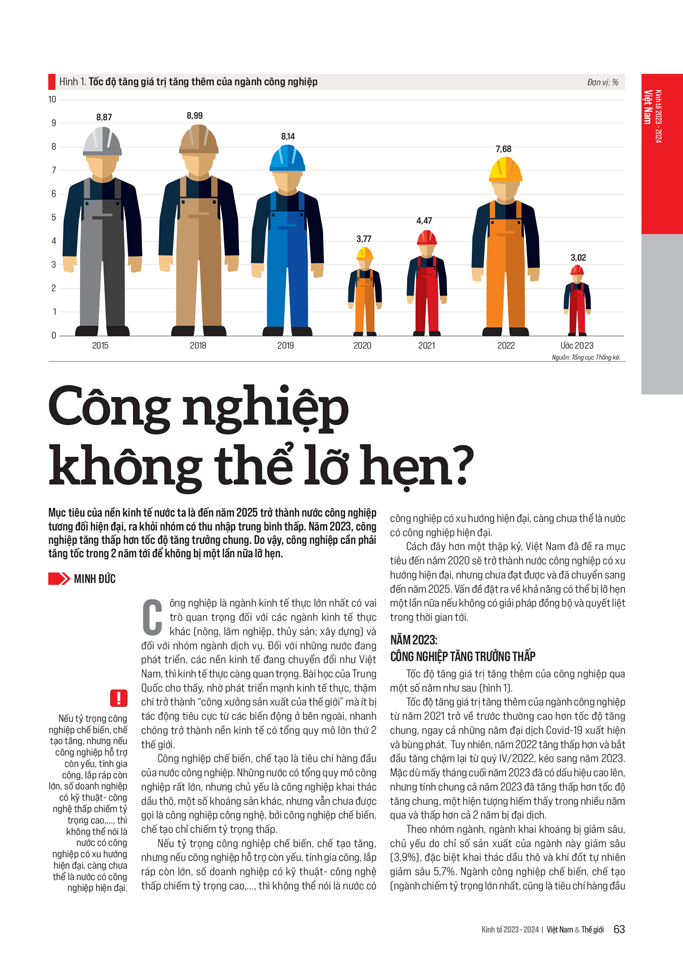
The most extensive bribery case ever in Thanh Hoa: Numerous suspects prosecuted for “Giving and Receiving Bribes”
The Provincial Security Investigation Agency (PSIA) of Thanh Hoa province announced on January 31st that it has made the decision to initiate a prosecution against 23 individuals in connection with the offenses of “Accepting bribes” and “Giving bribes” as stipulated in Article 354(3) and Article 364(2) of the Criminal Code.
“Prosecution of government officials, land registration officers, and tax department employees in the largest bribery case ever”
The Thanh Hoa Police Investigative Agency has initiated legal proceedings against 23 individuals involved in the crimes of “Bribery” and “Receiving bribes”. This is the largest bribery case in terms of the number of suspects ever discovered and apprehended by the Thanh Hoa Police.

